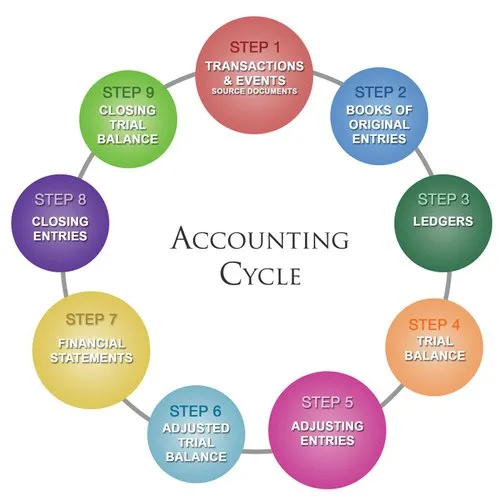Account Finalization Process, The account finalization process is a crucial step in financial reporting that involves completing and preparing the company’s financial statements for presentation to stakeholders. It ensures accuracy, transparency, and compliance with accounting standards.
The key steps involved in the account finalization process include:
Data Gathering and Preparation:
Collect all relevant financial information, transactions, and documents, including trial balances, ledgers, bank statements, invoices, and receipts. Ensure that all records are complete and accurate.
Adjusting Entries:
Review the trial balance and make necessary adjusting entries to account for accruals, deferrals, depreciation, and other adjustments required to align financial statements with the actual financial position of the company.
Reconciliation:
Reconcile various accounts, such as bank accounts, accounts receivable, and accounts payable, to ensure that the balances match the corresponding external statements, such as bank statements and vendor invoices.
Closing Entries:
Close temporary accounts (such as revenue and expense accounts) by transferring their balances to the appropriate permanent accounts (such as retained earnings) to start the new reporting period with accurate balances.
Calculation of Financial Ratios:
Compute important financial ratios and performance indicators to assess the company’s financial health, liquidity, profitability, and efficiency,Financial Statement Preparation
Income Statement:
Summarize the company’s revenues, expenses, and net income or loss over a specific period.
Balance Sheet:
Present the company’s assets, liabilities, and equity as of a particular date.
Cash Flow Statement:
Detail the company’s cash inflows and outflows from operating, investing, and financing activities.
Statement of Changes in Equity:
Show changes in equity accounts, such as additional investments and retained earnings.
Review and Approval:
Senior management and relevant stakeholders review and approve the financial statements for accuracy, completeness, and compliance with accounting standards.
External Audit (if applicable):
If required, engage external auditors to perform an audit of the financial statements to provide an independent assessment of the accuracy and fairness of the presented financial information.
Disclosure Notes:
Prepare notes to the financial statements that provide additional information about significant accounting policies, events, and transactions, ensuring transparency and clarity.
Filing and Distribution:
File the financial statements with relevant regulatory bodies (if necessary) and distribute them to shareholders, investors, lenders, and other stakeholders as required by regulations and company policies.
Management Discussion and Analysis (MD&A):
Prepare an MD&A section that accompanies the financial statements, providing insights into the company’s performance, risks, challenges, and future prospects.
Communication:
Present the financial statements to shareholders, analysts, and other interested parties through annual reports, investor presentations, or other communication channels.
Internal Review:
Conduct an internal review process to assess the overall effectiveness of the account finalization process, identifying areas for improvement in subsequent reporting periods.
Overall, the account finalization process ensures that a company’s financial statements accurately represent its financial position and performance, fostering transparency, accountability, and informed decision-making among stakeholders.
To visit: https://www.incometax.gov.in

